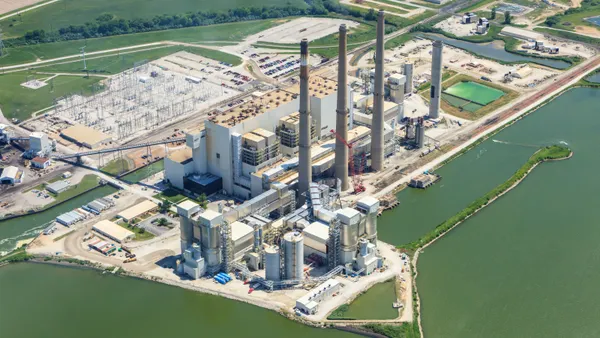Dive Brief:
- In separate filings, two dozen states, cities and environmental groups have urged the D.C. Circuit Court of Appeals to continue with its review of the Clean Power Plan, despite a request from the White House to hold the proceeding in abeyance.
- New York Attorney General Eric Schneiderman is leading the coalition of 24 states and cities; Environmental Defense Fund, Sierra Club, Earthjustice, Natural Resources Defense Council and other groups filed their own motion to continue the case.
- President Trump last week signed an executive order directing the U.S. Environmental Protection Agency to review the Clean Power Plan and other power sector regulations. The agency then asked the D.C. Circuit to put the case on hold, but supporters of the emissions rule say that could delay the litigation indefinitely.
Dive Insight:
In what is likely just the opening salvo of litigation surrounding the White House's approach to energy regulation, progressive states, cities and green groups have jumped to the defense of President Obama's signature environmental rule.
Trump's executive order directed the EPA to consider whether to “suspend, rescind, or revise” the Clean Power Plan. The controversial rule aims to cut emissions from existing power plants 32% by 2030, but is being challenged by more than two dozen states in court.
“The law is clear: the EPA must limit carbon pollution from power plants,” New York AG Schneiderman said in a statement. “In order to repeal Obama-era protections, the Trump Administration must replace those protections."
Joining New York in the filing are: the attorneys general of New York, California, Connecticut, Delaware, Hawaii, Illinois, Iowa, Maine, Maryland, Massachusetts, Minnesota, New Mexico, Oregon, Rhode Island, Vermont, Virginia, the District of Columbia, and Washington state; and officials from New York City, Boulder, Colo., Chicago, Philadelphia, South Miami and Broward County, Florida.
In their filing, the states and cities argue EPA failed to give sufficient reason for "its unprecedented request for an open-ended abeyance at this late stage of litigation."
Significant work has been done on the case, and the group argued the court should issue a decision rather than setting it aside. There was a full day of oral testimony in front of the full D.C. Circuit bench, and the rules have already been stayed by the U.S. Supreme Court, where it appears likely the argument will end.
The environmental coalition filed a similar motion.
Tomás Carbonell, director of regulatory policy and lead attorney for Environmental Defense Fund, said in a statement that the court "has already invested an extraordinary amount of time and resources."
"There is absolutely no justification for asking the court to suspend its deliberations at this late stage, and neither EPA nor the parties challenging the Clean Power Plan have pointed to any precedent," he said.
In their brief, EDF and the groups argued the EPA’s requested abeyance would put the rules on ice for years.
The agency "cannot be allowed to accomplish through abeyance something [that] it cannot do on its own: an indefinite suspension of a duly promulgated rule without judicial review," the groups wrote.
Earthjustice also filed opposition to delaying standards limiting carbon pollution from new fossil-fuel-fired power plants. "EPA’s motion here is presented in a different context than its abeyance motion in the Clean Power Plan case," the environmental law organization told the court.
The rule for new, modified, and reconstructed sources is currently in effect and not stayed, the groups said. "But, as in the Clean Power Plan case, the mere initiation of an administrative 'review' process here is no valid ground for indefinitely delaying judicial review of a final rule," they wrote.
Regardless of what happens in court, Trump's executive order indicates the EPA will likely seek to replace or rescind the rule. If the White House elects not to replace the rule with another carbon regulation, it could set up a legal showdown over the scope of the Clean Air Act or the EPA's 2009 endangerment finding on greenhouse gases.














